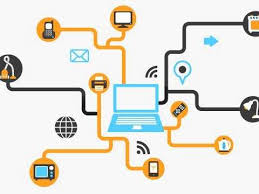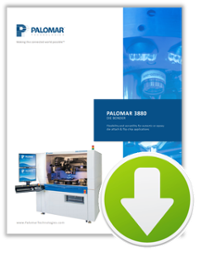There has been a resurgent growth in the fiber communications industry over the last few years. Much of this is to support higher bandwidth of internet traffic and the growth of the “Internet of Things”. You might be wondering, ‘what is the “Internet of Things”’? Cisco defines it this way:
years. Much of this is to support higher bandwidth of internet traffic and the growth of the “Internet of Things”. You might be wondering, ‘what is the “Internet of Things”’? Cisco defines it this way:
“The Internet of Things (IoT) is the network of physical objects accessed through the Internet, as defined by technology analysts and visionaries. These objects contain embedded technology to interact with internal states or the external environment. In other words, when objects can sense and communicate, it changes how and where decisions are made, and who makes them.”
Much of this growth is in the form of higher speed fiberoptic communications devices—some of the components of which require precise placement and low out-gassing attach methods. This is an ideal spot for use of UV cure materials. The components can be held in place while UV illumination “activates” the adhesives to at least “tack-hold” the components in place. Often this is followed by a thermal cure to strengthen the bond.
Earlier methods utilized thermal cure only epoxies. Some of these also had low out-gassing features, but the components could move between placement and cure. Also, the assemblies were subjected to often relatively high heat (150°C+) for extended periods (30-60 minutes).
The new materials also have excellent adhesion to glass, metal, rubber, ceramics and most plastics, and provide excellent resistance to moisture, chemicals, thermal shock, vibration and impact.
The current growth of the use of UV cure epoxies seems to be related to the growth in the optical communication device industry. But, with the advancements in the materials and processes, these same materials and techniques can cross over to other industries. Biomedical, automotive and aerospace assemblies can utilize these materials for advanced packaging requirements. This can also be leveraged and utilized in low-cost/high-volume Chip-On-Board assemblies.
Challenges
The challenges with using UV cure epoxies involve their particular behaviors, both in the attach methodology and storage and handling requirements. Many of these materials have short pot-life and exposure to air or light must be minimized.
Solutions
The dispense capabilities of the 3880 Die Bonder already minimize air and light exposure; for pin transfer (daub) applications, there are covers for the epoxy pots to minimize light exposure.

Palomar also has a new feature for automated curing of the UV epoxies. The new option on the 3880 Die Bonder allows easy automation of multiple-head UV light sources for production capabilities. We are also developing expertise with the different materials and techniques.
|
Download the 3880 Die Bonder Data Sheet:
|
To learn more about epoxy die attach, download the |
References: http://www.cisco.com/web/solutions/trends/iot/overview.html.
Internet of Things photo credit: http://static1.businessinsider.com/image/5266e272eab8eae908f28462/heres-why-the-internet-of-things-will-be-huge-and-drive-tremendous-value-for-people-and-businesses.jpg.
----
David Rasmussen
Assembly Services General Manager
Palomar Technologies, Inc.

